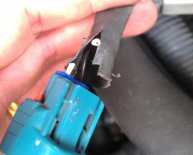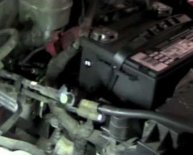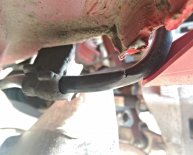
P0440 Evaporative Emission Control System Malfunction
Fault Code Definition
- Evaporative System Malfunction, Large Leak
Symptoms
- Check Engine Light will illuminate
- In most cases, there are no adverse conditions noticed by the driver
- In some cases, there may be a noticeable fuel odor caused by the release of fuel vapors
Common Problems That Trigger the P0440 Code
- Missing fuel cap
- Defective or damaged fuel cap
- Distorted or damaged Fuel Tank Filler Neck
- Torn or punctured Evaporative system hose(s)
- Defective Fuel Tank Sending Unit gasket or seal
- Split or damaged Carbon Canister
- Defective Evaporative Vent Valve and/or Evaporative Purge Valve
- Defective or damaged fuel tank
Common Misdiagnoses
- Fuel cap
- Evaporative Purge Valve
- Evaporative Vent Valve
Polluting Gases Expelled
- HCs (Hydrocarbons): Unburned droplets of raw fuel that smell, affect breathing, and contribute to smog
The Basics
The evaporative control (EVAP) system captures any raw fuel evaporating from the fuel storage system (e.g. the fuel tank, filler neck, and fuel cap). Under precise operating conditions—dictated by engine temperature, speed, and load—the EVAP system stores and purges these captured fuel vapors back into the combustion process.
Want to Learn More?
The EVAP system is designed not only to capture, store, and purge any raw fuel vapors that leak from areas in the Fuel Storage system, but also to run a series of self-tests that confirm or deny the operational and vapor holding ability of the system. This is an important task because at least 20 percent of vehicle-produced air pollution originates from malfunctioning Vehicle Fuel Storage systems.
There are many ways to "leak test" the EVAP system, but most perform the leak test when the vehicle is sitting (like over night) or during the initial start-up after the vehicle has been sitting over night. The EVAP system's operational performance is also tracked by the Powertrain Computer by reading the change in the oxygen sensor voltages and short term fuel trim whenever the stored vapors are released or "purged" back into the combustion process. These values should indicate that fuel is being added to the system and that the overall mixture is getting richer. The purging process occurs when the vehicle is under acceleration, which is when most vehicles require additional fuel.
P0440 Diagnostic Theory for Shops and Technicians
The P0440 code indicates that there is a large leak in the EVAP system, but this is somewhat misleading. What the code really indicates is that the EVAP system will not create a significant vacuum when it performs its leak test, as monitored by the Fuel Tank Pressure Sensor.
Here is how the evaporative leak test is performed by the Powertrain Computer:
- When the leak test is performed, the vehicle must have been sitting for at least four to eight hours so that the engine temperature and outside air temperature are identical. There must also be between 15 and 85 percent fuel in the tank—this is to provide a baseline for the test since gasoline and diesel are volatile fluids that expand and vaporize easily with warm temperatures.
- When the leak test initiates, the Vapor Canister Vent Valve is closed to prevent any fresh air from entering the EVAP system.
- The Purge Valve is opened, which allows the engine to create a vacuum in the EVAP system.
- After a specified time interval—usually about ten seconds—the Purge Valve is shut off and the vacuum level in the system is measured by the Fuel Tank Pressure Sensor.
- Finally, a countdown initiates, which measures the rate at which the vacuum decays in the system. If the vacuum decays much faster than the specified rate or if no amount of vacuum is reached on two consecutive tests, then the Powertrain Computer will fail the EVAP system for a gross leak and trigger the P0440 code.

















